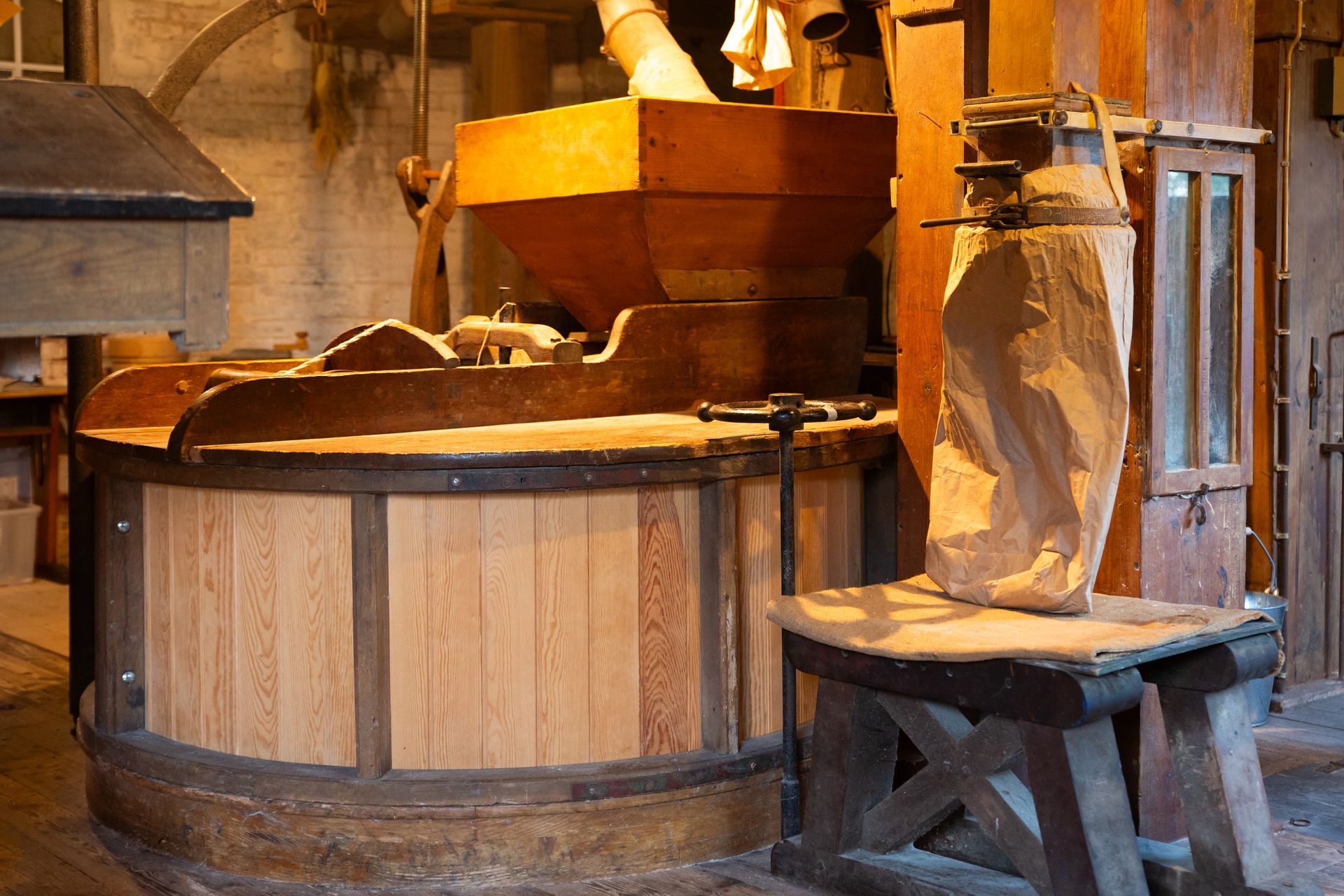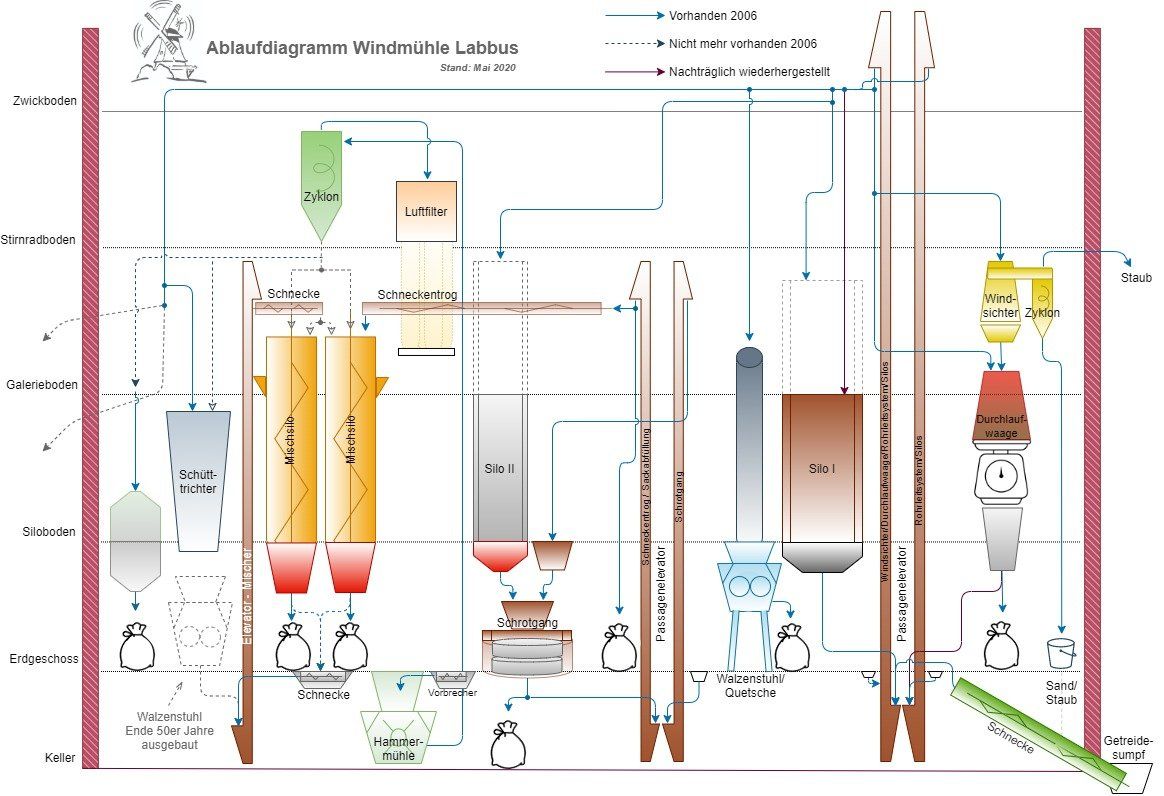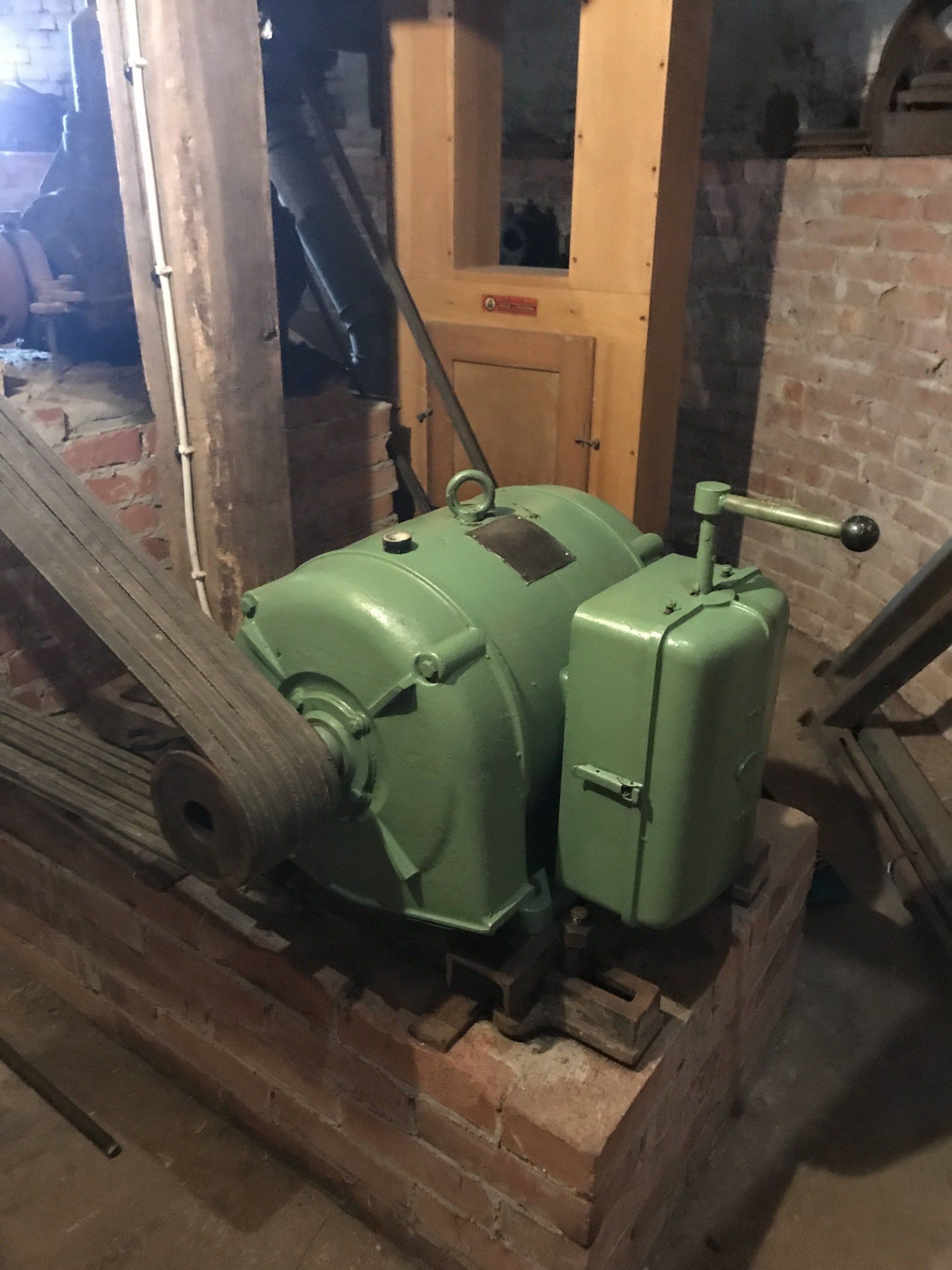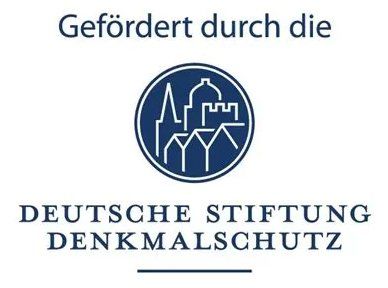Here Europe is investing in rural areas with the measure:
Mill construction and technology
Mill construction
The Labbus windmill is a so-called gallery windmill and is based on a 6-meter (up to the gallery floor) high brick octagon in which the grinding mill (previously several grinding mills) is located. The main purpose of this structure is to give the windmill height. The shape of the brick octagon shows that it was built on the base of the original earthen windmill that was destroyed by fire.
After World War II, a full basement was excavated to house the electric motor, the transmissions and the oil press.
The gallery on the 3rd level, which provided access to the wings and brake, was in danger of collapsing and had to be demolished in 2006. It was replaced as part of the restoration in mid-2022.
The wooden octagon, which is built on the brick hull, is a three-story, upwardly tapering construction on which the cap rests. The cap, which contains the wing shaft and pinion wheel, rotates automatically into the wind using a wind rose.
Over the decades, a number of changes were made to the mill, both in terms of its technology and its construction. However, the last miller, Henke, always ensured that, unlike in many other windmills, the technology for wind power was preserved and maintained. The last major maintenance work took place in 1975.

Originally, the cap was turned into the wind by hand from the gallery using a long codend. The codend was replaced in 1921 by a wind rose (a vertical wind wheel that always aligns the mill cap against the wind).
The wooden sash shaft is still the original one from 1851. The shaft originally had a wooden corrugated head, which was replaced in 1913 by an iron corrugated head from the Weymann iron foundry in Osnabrück. This number can still be seen on the front of the corrugated head. At the same time, the sashes were converted from canvas to blinds and the sash shaft was drilled through lengthwise for the push rod of the blind control.
After the Second World War, one pair of wings was fitted with blinds. Later, both pairs of wings were fitted with blind flaps taken from the demolished Baumann windmill in Okel near Syke. The current tips and the breast piece of the house rod, as well as the spur gear, come from Aschen near Diepholz. The breast piece of the field rod used to belong to Hasbergen (Heemsen), where it was part of a pair of Ventikanten wings. The tips of the field rod were made by the Wilhelm Laasch metalworking shop in Sudwalde.
In November 1972, the shutters were damaged by a storm. As a temporary solution, the mill was fitted with sails, which adorned the mill until 1985, when the shutters that are still there today were reinstalled.
Mühlentechnik
Technical and structural development - overview
- 1912 Installation of a benzene engine in an outbuilding (today's workshop)
- 1913 Sail gates are replaced by louvre sashes. The wooden sash head is replaced by an iron one.
- 1921 Wind rose replaces previous codend
- 1924 Benzene engine gives way to a Deutz diesel
- original equipment:
- 150 mm shotgun
- 180 bag capacity (for fine flour production)
- a large hexagonal sifter on the 2nd floor (removed in the 20s or 30s)
- A pointed tunnel for the production of barley was also present, but was shut down in the 1920s or 1930s
- On the ground floor there is a smaller hexagonal screen; this was replaced in the 1920s or 1930s by an Askania screen, which is also no longer there
- After the Second World War, a full basement was built, which housed the current electric motor with transmission, as well as a hammer mill (installation unknown). The grist mill was moved to the ground floor with a lower drive.
- around 1950 installation of roller mill
- Mill was in regular operation until the mid-1980s
- At the beginning of the 90s the wings turned one last time
- 6 December 2012 Acceptance of the wings and temporary storage at the Mühlenhof
- 23 May 2013 Removal of the cap for structural safety purposes prior to restoration and interim storage at the Mühlenhof
- 2019 Restoration of the mill cap with wind rose
- Spring 2020 Reinstallation of the restored mill cap
- 2019/2020 Refurbishment of grinding and conveying technology
- 2022 Restoration of the wings and new construction of the gallery - for a rotating mill
Originally, the gallery mill, built in 1851, had a half-timbered outbuilding on the site of today's sack warehouse. From 1945, it housed an oil mill, which was connected not via a transmission, but via a spindle (upwards) and pinion wheels (downwards). The half-timbered extension also served as a workshop. In the early 1920s, the half-timbered extension on the north-west side of the mill was replaced in favor of a new, larger cross-passage barn, which was initially boarded up and later walled in. In the 1950s, Heinrich Henke rebuilt the barn: to make it more suitable for use as a warehouse for the mill, it was given a ramp on the outside and a new wooden floor on the inside at the level of this ramp. A room partitioned off at the edge of the octagon served as a meeting place for mill and shipping employees.
In 2009, the Hansing family converted the sack storage facility into an event barn, with the entire framework retained and the exterior appearance reminiscent of the original larch planking. The office was located in the miller's house.
The entire gear system of the mill, including the stock wheels, was originally made of wood. The wooden main shaft of the mill was split from top to bottom by lightning; bands held it together afterwards. The iron main shaft that is in the mill today came from Binnen around 1948, where the Böckmann brothers' mill had been damaged by air raids during the war and was abandoned due to a lack of a successor.
The wooden spur gear was initially located on the main shaft from Binnen. In the 1970s, Heinrich Henke brought today's spur gear from the windmill in Aschen near Diepholz. Instead of the existing wooden spokes, it was given iron spokes in Labbus. The combs, which are handmade from hornbeam wood, were re-circled and adjusted in April 2020.
There were originally two grinding mills on the gallery floor - a grist mill with a diameter of 1.50m and a 1.80m bag mill for producing fine flour. This had a runner made of artificial stone and a base stone made of blue basalt ("false Frenchman"). There was a hexagonal sifter under the bag mill. The bag mill existed until the 1920s. The grist mill was expanded in the early 1930s. On the ground floor there was a smaller hexagonal sifter with slanted conveyor plates; this was replaced in the 1920s or 1930s by an Askania sifter, which, however, did not produce good flour because it was too dark. The mill also had a pointed mill for producing barley with an unusual design: a sandstone vat and a rotating perforated sheet metal casing placed around the stone. The surrounding stones of this are still present on the mill site.
Existing mill technology
- 1 grist mill on the ground floor (underdrive in the basement, optionally by wind or electric motor). Artificial stones, one of which was installed at the end of 2020.
- 2 oil bath gearboxes from Wülfel
- A roller mill "Silent Patent" as an oat crusher, installed around 1950
- 1 hammer mill, President brand
- 1 continuous / bagging scale, brand Chronos, installed in 1973 (used)
- 2 mixers (capacity 2 tons), built by Laasch from Sudwalde (one functional)
- 3 elevators - two double, one with either wind or motor drive and one single
- Sack lift (friction winch), installation in the 1970s
- Petkus seed cleaner in wooden design (formerly in the sack warehouse, now in the workshop)
Currently in progress:
- Centrifugal sifter from the Obermühle in Bad Münder, which was demolished in 1997 (built around 1910)
- Wetzig roller mill model H from a windmill converted into a dwelling in Japenzin (built around 1925)
- Throwing sifter of the mill builder Hilscher from Sulingen (built around 1940) from a motor mill in Hohenmoor











